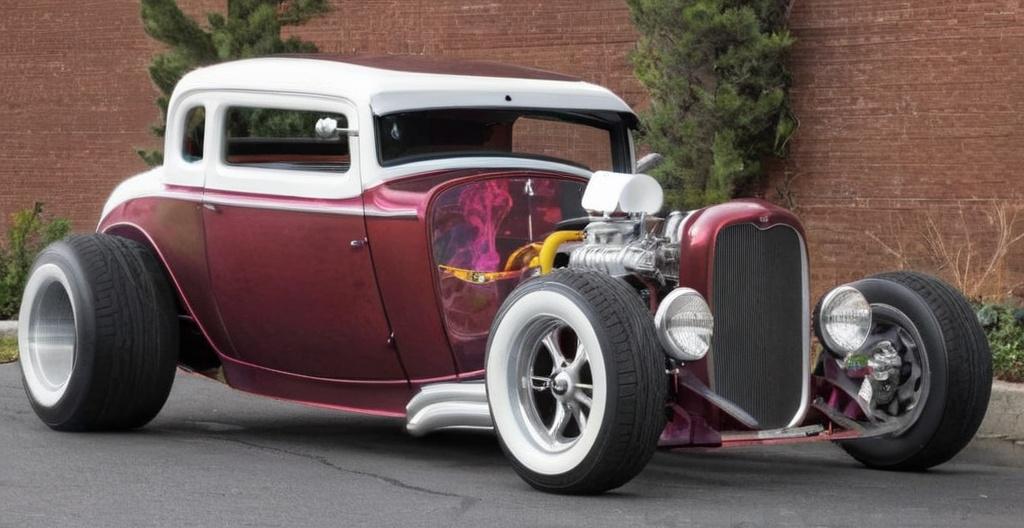Key Take Aways About Engine Swaps in Street Rodding
- Engine swaps are a key aspect of street rodding, enhancing performance and efficiency.
- Modern engines bring technology advancements while preserving classic car design.
- Popular choices include GM’s LS engines and Japanese models like Toyota’s 2JZ and Honda’s K-series.
- Swaps can be expensive and require significant mechanical skill and patience.
- Common challenges include fitting issues, wiring, and compatibility problems.
- The process is both an art and a rewarding personal endeavor, integral to car culture.

Introduction to Engine Swaps
In street rodding, one might think folks are just slapping a flashy paint job on a vintage model and calling it a day. But there’s a secret ingredient that gives these cars their heart and soul—an engine swap. It’s the process of replacing the original engine with a more powerful or efficient one, and it’s a cornerstone of street rodding culture.
Why Mess with a Good Thing?
Swapping out an engine isn’t just about horsepower, though that’s a big part of it. Ask any gearhead why they did an engine swap, and you’ll likely hear about the thrill of combining modern tech with classic design. It’s like having the best of both worlds without sacrificing the car’s original charm. Folks often replace engines to improve reliability, fuel efficiency, or just because they crave a bit more oomph when the light turns green.
Biting off More than One Can Chew
Performing an engine swap is not for the faint-hearted. It’s like juggling flaming torches—one wrong move, and things could go south quickly. First, you got to make sure the new engine physically fits into the existing space. It’s not as simple as it looks, kind of like trying to fit a square peg in a round hole. Then there’s the wiring, the cooling systems, and the exhaust—each of these is a puzzle piece that needs precise placement.
The Appeal of Modern Powerplants
Old-school engines have a charm that gets even non-car folks nodding in appreciation, but let’s face it, they’re not winning any mpg awards. Enter modern engines—these babies offer power without the guilt trip at the pump. The LS engines by General Motors are a crowd favorite—powerful, reliable, and they fit in a lot of builds. Installing a modern powerplant can make your classic car purr like a kitten but roar like a lion when needed.
LS Engines: The Go-To Choice
Why do rodders love LS engines so much? They’re affordable and readily available. Junkyards are littered with these from wrecked Chevy trucks and SUVs. Plus, there’s a mountain of aftermarket parts to tweak every aspect of performance. It’s not uncommon to hear someone bragging about squeezing over 500 horsepower out of one of these.
The Japanese Influence
Japanese engines have also found their way into the hearts of rodders. The straight-six 2JZ from Toyota is legendary for its robustness and capability to handle insane amounts of boost. For those who want a high-revving, lightweight option, the Honda K-series offers thrilling performance in a small package—turning heads in more ways than one.
The Financial Side of Engine Swaps
Engine swaps aren’t cheap. By the time you factor in labor, parts, and unforeseen expenses, the costs can add up faster than you might think. For those with a shoe-string budget, doing the work yourself is the way to go. However, this requires a good deal of mechanical know-how. It’s not just about saving money; it’s about pouring sweat equity into a project, which often feels more satisfying than signing a check.
Common Pitfalls and Fixes
No one ever said engine swaps are foolproof. Challenges pop up like unscheduled stops along the road. From mismatched motor mounts to complications in the wiring harness, unexpected hurdles can spring up. And let’s not even get started on clearance issues, a real head-scratcher when the engine just won’t sit right. The key is patience and having a buddy who owes you favors.
Personal Stories from the Garage
Talk to any rodder, and they’ll have a tale or two about that one swap they almost gave up on. Bob from down the street spent the better part of a year tinkering in his garage. Every weekend was a new challenge, whether it was wrestling with a stubborn bolt or realizing he ordered the wrong part—again. But ask him now, when his car roars to life, and you’ll see that smile that says it was all worth it.
Conclusion
Engine swaps are the lifeblood of street rodding, a mix of art, science, and a dash of madness. It’s about taking something old and infusing it with new life, not just making it faster or shinier, but better in a way that speaks to the heart of car culture. Whether it’s the growl of an LS engine under the hood or the whine of a high-revving K-series, each swap is a personal expression of creativity and passion. Swapping engines might be a lot of things, but it ain’t boring.
